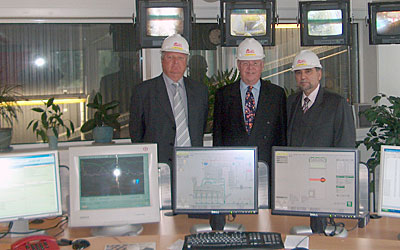WTE or Waste-to-Energy refers to processes and technologies used to generate energy from municipal solid waste (MSW).
- WTE plants incinerate MSW and use the heat produced to generate steam to drive a turbine for electricity generation.
- The generated electricity can be used to power homes, waste facilities and fed back into the grid.
- Modern WTE plants are equipped with emissions control systems to reduce environmental impact.
- In addition to electricity production, WTE helps in waste management by reducing the volumes going into landfills.
- WTE offers renewable derivation up to 50% and energy recovery between 60 – 90% from the MSW.
- Limitations include high capital costs, requirement of continuous waste stream, and local environmental regulations.
Thus WTE provides an alternative disposal approach compared to landfilling while extracting value as electricity from non-recyclable waste fractions.

(Left to right: Inventor Leonard Strand, Naanovo's Dr. J. Thomas Morrow, and IPWG's Peter N. Toscano.)
In 2005, International Power Group received an exclusive licensing agreement from Naanovo Energy for various countries.
Along with various financial partners brought to the table by International Power Group it was disclosed that presently the number of locations being sought exceeds seven site locations housing over one hundred and twenty modules at an estimated construction cost exceeding three billion dollars.
Naanovo's proprietary Waste to Energy (WTE) technology allows, each module to combust one hundred eighty tons of municipal solid waste per day. Each module reduces the waste to levels that are below 10% its original volume and 20% of its original weight.
A WTE module will generate a minimum of six megawatts per hour of electricity as a byproduct of the process. A natural byproduct of each WTE module is 145,920 gallons per day of distilled water.